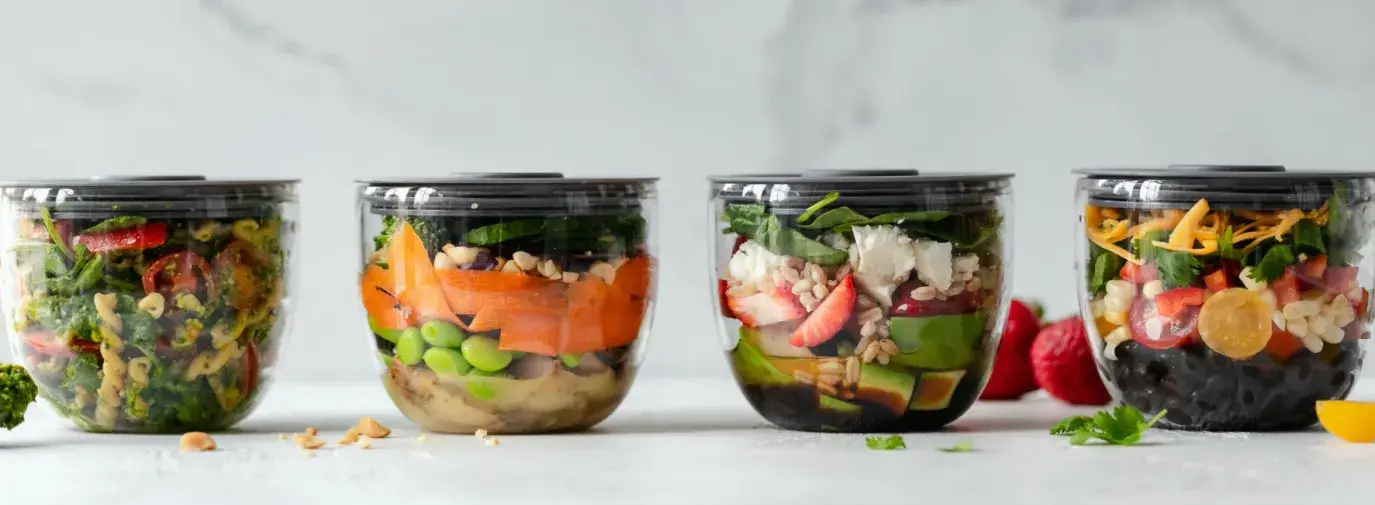
Choosing the eco-eating lifestyle doesn’t have to be boring—it’s not just shopping at a health food store and eating organic bran (but it can be, if that’s what you’re into). Whether you’re all-in for a nontoxic pantry or just dipping your toe into farmers market shopping, follow these tips for a menu that’s whole-planet oriented.
Sunday: Shopping Day
Going to the grocery store is a great way to vote with your dollars about what kind of world you want to see. Get to know labels like Non-GMO Project, Animal Welfare Approved, USDA Organic, FairTrade, and other labels pertaining to environmental, human, and animal health. The best of the best labels offer assurance by third-party organizations that audit, test, and check standards at supply chain providers. The worst labels, which you can ignore, are just marketing phrases like “all-natural,” “farm fresh,” and “cage-free.”
Monday: Meatless/Vegan Monday
During WWI, the government encouraged Americans to reduce their intake of staple foods to aid the war effort—in part by adopting Meatless Mondays. Nowadays, climate activists have also pushed for people to eat meat-free at least one day per week, to reduce emissions from animal agriculture, which is responsible for about 20% of all greenhouse gas emissions, according to a 2021 study published in the journal Nature Food.
Tuesday: Try Local Flavors
Ever heard the term “locavore,” meaning someone who eats local food? It’s not possible for all foods all the time, but there are great benefits to eating local when you can:
- Taste: Local food might taste better because it was picked at its peak, instead of weeks earlier, like produce you find at the grocery store.
- Climate impact: It travels less of a distance to get to you, which lowers your carbon footprint.
- Supporting local economies: Buying local keeps money circulating in your local economy. Plus, knowing the farmers means you can ask questions about how your food was grown and engage in conversations about important topics, like how regenerative agriculture helps soil health and fights climate change.
Incorporate local food by finding a farmers market in your area or joining a Community Supported Agriculture (CSA) program, which delivers boxes of local food to your door or an easily accessible location every week.
Wednesday: Feeling Fishy
Fish is broadly considered a healthy food, with less fat and just as much protein as other meats, plus omega-3s, calcium, and other minerals. There’s not currently certification for USDA organic fish. But some methods of fishing aren’t sustainable, like bottom-trawling, which can speed up coral reef destruction, and is used in some regions for bottom-feeders like catfish. Other types of fish may not be as sustainable because they are chronically over-fished, like cod and Chilean sea bass, or unhealthy because they may have high concentrations of mercury, like swordfish.
These examples all come from Monterey Bay Aquarium’s SeafoodWatch.org which has resources for finding safe, sustainable options of whatever you have a taste for. There’s also an app you can use in the grocery store.
The best way to get high-quality seafood that’s caught in an eco-friendly way is to buy local and check labels. If you have a fish market in your community, talk to the employees about where fish comes from. In stores, look for labels including Marine Stewardship Council, Fishwise, and Seafood Safe.
Thursday: Be Aware of Food Waste
A study from the Natural Resources Defense Council found that 40% of food in the US is wasted. Much of it never makes it to fridges and pantries as it goes bad on farms, in trucks, or at grocery stores. But it’s estimated that households waste a quarter of the groceries they bring home—that’s like leaving a bag of groceries you’ve paid for at the store every week!
Make sure you use up the food you buy. Make sure to keep and safely reheat those leftovers.
Friday: Eating Out and Staying Green
Many folks who are interested in their health and the health of the Earth avoid restaurant food because it tends to be more processed, or when it’s organic and unprocessed, it can get rather pricey. That doesn’t mean you can’t treat yourself to a night out once in a while. Check GreenPages.org for certified green restaurants, as well as the Green Restaurant Association{GBN} dinegreen.com. The Happy Cow app is an easy resource to find vegan and vegetarian restaurants near you, at all price points.
Saturday: In Search of Healthier Soils
Corporate agriculture is driving the climate crisis and flooding the market with processed products and food grown on degraded land. Instead, opt for food grown in healthy ways, like using regenerative agriculture practices. Regenerative agriculture is a holistic land-management practice that uses the power of photosynthesis in plants to sequester carbon in the soil while improving soil health, crop yields, water resilience, and nutrient density.
Regeneratively grown food isn’t just better for the Earth; those healthier soils mean your fruits, veggies, and even regeneratively raised meats have higher nutritional value, and you lessen your exposure to toxic pesticides. Food companies should be driving the use of sustainable practices, including pesticide reduction, through their supply chains.
Until that is a widespread practice, buying whole foods from regenerative farmers is your best bet. Ask questions, like “who grew this and what farming practices did they use?” And listen for answers that involve not using synthetic chemicals, growing diverse crops, and composting.
There is currently no way to tell what soil health practices are being used in the supply chains of foods at your grocery store, but Green America’s Soil Carbon Initiative is working on a label. Until that comes to stores near you, look for USDA organic, Non-GMO Project, and biodynamic certifications.
One of the best ways to be an eco warrior is to be an eco eater, whatever that might look like for you! The most important thing is to be healthy, which you can do by exploring the world's flavors and experimenting with various eco-friendly foods and diets.







